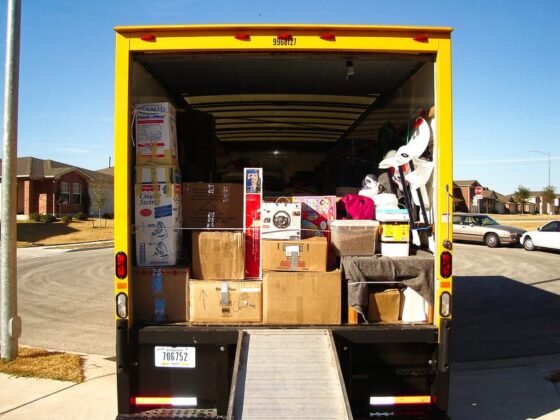Table of Contents Show
Moving to a new state or country is a unique experience than moving down the block or to the other edge of the city.
You must plan your whole relocation months, including vacating your house, preparing your equipment for the long move, and arranging a place to keep your stuff until you find a place to settle in the new location.

While each phase of a long-distance move is unique, packing your belongings for the long move and ensuring that all of your items stay safe from damage during transportation may be the most challenging part.
Hong Kong is one of the most attractive destinations for immigrants due to its fascinating lifestyle, free economy, dynamic career opportunities, high salaries, and affordable living.
If you’re relocating to Hong Kong (or from there), your furniture may have to move by air or sea. Planning a move to or from the country, plus packing it for shipment, requires deliberate planning and care.
If you’re someone in the same boat, i.e., planning a long-distance move, here are some useful tips to ensure your furniture stays safe during packing and transportation.
1. Rent a Storage Unit for Temporary Storage
Renting a temporary storage unit serves numerous advantages. It provides you the flexibility and freedom to acclimate to your new surroundings and deliberate on the best area for you to reside.
When you know your furniture and precious belongings are safe in the storage unit, you have the peace of mind to focus on other important relocation issues.
Kwon Tong, Kowloon, is among the most populated districts of Hong Kong. The city district offers numerous storage facilities near prime locations and suburbs to accommodate the increased space needs.
If you’re planning to relocate to the busiest district of Hong Kong, SC Storage has the most high-quality mini storage Kwun Tong, Kowloon, has to offer.
Located around the Hong Kong islands, Kowloon, and N.T. areas, you can easily store your furniture in a nearby branch. An online reservation facility allows you to rent a storage unit beforehand.
Read Also:
2. Plan the Entire Move in Advance
Knowing more about the place you’re moving to will help you plan your entire move. It’s important to consider the average residential space in the new city, its lifestyle, weather, and economic conditions to narrow down the choice of furniture you’re willing to relocate.
Instead of waiting until the last minute, start preparing for your relocation the moment you decide to relocate. Make a list of all the moving tasks associated with packing and transporting your furniture.
Check transportation availability ahead of time to ensure you don’t run out of alternatives before leaving your house. Plan your relocation dates and temporary storage ahead of time if you need more time to find a better house. This pre-planning may save you time and money in loading and storing your furniture.
3. Make a Furniture Checklist
Preparing a detailed furniture checklist will help you plan which items you need to pack first and which ones you wish to discard.
Create a complete inventory list of furniture in your bedrooms, living room, kitchen, dining, and patio. Make a separate list of furniture items you want to donate or sell so you know exactly what you plan to sell during the garage sale.
4. Prepare a Moving Budget
Furniture items are the largest moving items that take up most of the space, so you need to plan a budget. Preparing a budget for your furniture move is the most significant part of long-move pre-planning as it will help you arrange funds and adjust your move plans.
The cost of your long-distance move depends on the total distance, fuel cost, the type of carriage you need, and the number of belongings you wish to move. Use a budget estimator or cost calculator and create a moving budget accordingly.
Whether you book a full vehicle or share space with other customers, look for a business that provides transparent rates and moving insurance.
Keep extra funds when preparing a moving budget to cater to any additional costs or contingencies. Consider accommodation expenses during traveling and temporary residence on your arrival.
5. Disassemble as Much as Possible
When it comes to long-distance moving, the best way to save money is to ensure you utilize as much space as possible during the move; this applies to both the vehicle and temporary storage.
One of the best ways to use minimum space is to detach furniture parts and place them vertically or horizontally along the walls. Unlike sofas and dressers, it’s easier to disassemble some other pieces of furniture.
Dismantling furniture makes it easier to move and prevents damage during transportation. It not only applies to the truck but also to the boxes that you pack in.
If you use the boxes properly, you will be able to make fewer trips for loading and need less space. Dismantle the back and front of the beds, remove doorknobs, hooks, and other removable parts, and detach table tops from the legs.
6. Purchase Proper Packing Supplies
Long-distance moves can be tumultuous no matter how carefully your furniture delivery company handles loading and unloading. Investing in top-notch packing supplies is essential to guarantee that your furnishings arrive unscathed.
Such items include bubble wraps, corrugated cardboard boxes, foam sheets for delicate objects like mirrors or TVs, stretch wrappings, cushions for sofas and mattresses, and moving blankets to protect from dust accumulation during the commute – all of which will ensure safe passage of your treasured belongings!
7. Leverage Home Supplies
Instead of purchasing expensive packing blankets, mattresses, or sofa covers, use your old bedsheets, quilts, and towels to save packing costs. Additionally, you can purchase old linens, mattress and sofa covers, and cushions from thrift stores or check out garage sales.
8. Secure Furniture Corners, Curves, and Delicate Areas
Your furniture’s corners and curved are prone to damage during transportation, loading, and unloading. Ensure you secure each furniture corner adequately to make it shockproof.
You can use old cushions, cotton, and bed covers to secure the edges, curves, and delicate areas of your furniture. Provide extra padding to delicate areas before covering up the entire furniture item.
9. Choose a Credible Moving Company
The safety of your furniture is heavily dependent on how skilfully it is transported during a long-distance move.
Hiring a reputable moving company that provides various services, including insurance, real-time tracking, customer support, packing, unpacking, etc., can greatly reduce stress. Request quotes from several professional moving companies to determine what would work best for your needs.
10. Schedule Your Move to Minimize Waiting Time
Develop an overall schedule of the entire relocation once you know the precise time of your move.
Book your moving dates, temporary accommodation, and self-storage space, and set a tentative timeline to help you manage your relocation on time. However, keep your schedule flexible to account for delays and unanticipated circumstances.
Final Thoughts
There are numerous ways to safely relocate your furniture during long-distance moves, each with its own benefits, drawbacks, and average cost.
Doing your homework beforehand is the best way to minimize moving costs, prevent delays, and make the most of your time and money. The above list will help you carefully plan your long-distance furniture move and take all necessary precautions to keep your precious belongings safe from damage.










